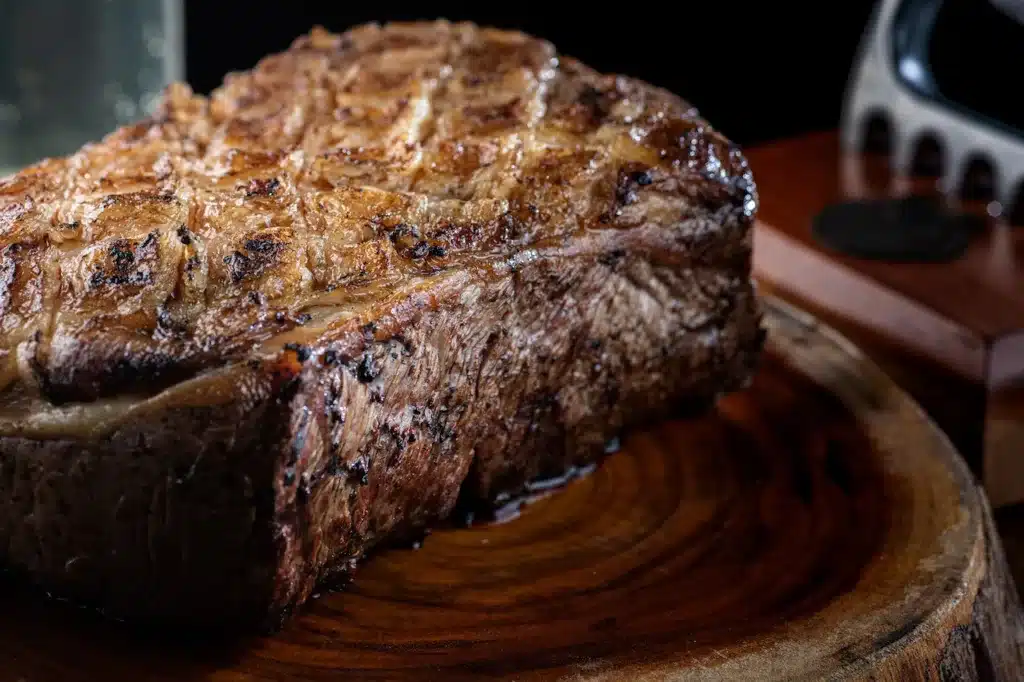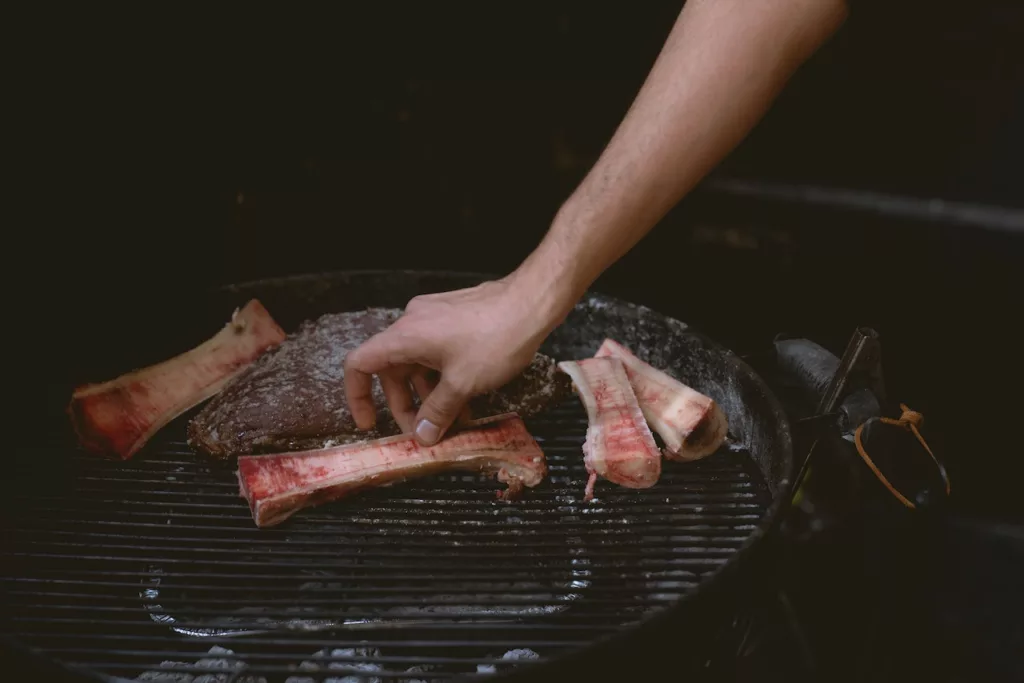Can dogs eat raw meat, including liver, offal, tripe, and omasum? What are the concerns to keep in mind when feeding dogs raw meat? In the past, before dog food became widely available, dogs had to survive on home-cooked food. So, what is the truth about dogs‘ diets and raw meat consumption?
Table of Contents
You might be interested in: Can dogs eat Cheetos? Is Cheetos harmful to dogs?

Can dogs eat raw meat?
There are various research studies and opinions on canine nutrition. While some people oppose raw feeding due to the risk of parasites and pathogens, others disagree with cooking since it may lead to a loss of enzymes, natural probiotics, and vitamins. So, which is the better option? Domestication has altered many aspects of a dog’s digestive physiology and other structures, resulting in visible differences between dogs and their near cousins, wolves. However, domestication has not altered the nature of the dog or its food, which is a carnivorous diet consisting primarily of raw meat, as they would consume in the wild. Raw meat is beneficial to dogs because it conforms perfectly to their bodies:
- -The dental parts are powerful enough to rip the meat.
- -The stomach is small and muscular, ideal for digestion.
- -The meat does not spoil during digestion because the gut is short.
- -The digestive fluids and saliva of the dog are perfect for digesting animal protein.
The dog’s digestive system is designed to digest meat easily, preferably raw, as it would in the wild. However, certain urban legends, such as “raw meat makes a dog aggressive,” are entirely untrue. Nonetheless, some potential parasites and diseases may be found in raw meat, so it’s crucial to seek out high-quality, certified items. To prevent the dog from getting salmonella, E. coli, or trichinosis, we may freeze the meat or lightly grill it before serving it. Whether to serve it fully raw for higher nutritional benefits or slightly cooked to avoid health concerns is a personal preference.
Finally, keep in mind that it will be the dog that decides whether to consume one product or another. While some dogs relish raw meat, others will reject it with distaste, particularly tiny breeds, elderly dogs, or those that have not been exposed to it since they were puppies.

The answer is “yes,” but with conditions.
Therefore, it is essential to carefully study the following list:
- -A balanced diet consisting of raw meat in moderation, along with fruits, vegetables, and grains.
- -Quality meat from a safe and reputable source to avoid digestive issues and diseases.
- -Bones, if offered, should be raw rather than fried to prevent the risk of splintering.
- -The meat should be prepared by chopping it to avoid choking.
- -Cartilage, if present in the meat, provides an excellent supply of collagen and hence a natural chondroprotective.
To ensure the safety of your dog when feeding them raw meat, it is important to freeze it for at least 48 hours before serving. This will help destroy any harmful microorganisms that may be present. However, it is crucial to thoroughly thaw the meat before giving it to your furry friend.
How much raw meat a dog can eat?
Although the dog should not consume meat exclusively, it should be the most abundant food in its diet. The dog has a small stomach, so the portions should be small and served two to three times each day. The percentage of meat in the dog’s diet should be approximately 75% of the overall ratio, and contrary to popular belief, viscera are not beneficial since they are frequently high in toxins.
When feeding our dogs raw meat, we should give them lean meat leftovers, particularly sheep, goat, or beef, and for tiny dogs, rabbits, and fowl are the most recommended meats. We understand that feeding raw meat to a dog regularly might be expensive for some households, but we’ve already discussed lean meat leftovers, which are ideal because the dog no longer requires them and are low-cost at butcher shops.
Dogs can eat raw meat without any issues because they are used to it. Because they can break muscle fibers with their teeth and digest them easily in the digestive tract, we ask if feeding raw meat to dogs is safe.
Benefits of raw meat in dogs
While raw meat can provide numerous benefits to your dog’s health, it is important to keep in mind that it is a “bacteriologically living” food that requires strict hygiene procedures. Therefore, ensuring that the meat is healthy and that your dog receives a complete and balanced diet is essential.
Giving your dog fresh meat is ideal, but frozen meat is also an option. If you choose to use frozen meat, it is essential to allow it to thaw completely at room temperature to avoid compromising its quality. It is not necessary to grind or chop the meat; simply cutting it up will suffice.
Dogs can digest raw meat and bones without issue, as their digestive systems are designed to handle such foods. However, they cannot absorb nutrients from uncooked or undigested vegetables.
In the past, dogs were commonly fed raw meat as part of their diet, and their digestive systems are still wired to digest it. A raw meat diet for dogs is feasible, but it is important to include other foods such as vegetables, fruit, and dietary supplements to ensure a complete and balanced diet.

Conclusion: Can dogs eat raw meat?
In conclusion, dogs can safely eat raw meat as long as it is properly handled and prepared, and a balanced diet is provided that includes other food groups. Some dogs may also enjoy cooked or prepared meat as an alternative. It is important to prioritize your dog’s health and happiness by providing them with the best possible diet.
References: Is It Safe to Eat Raw Meat?, Barf Diet for dogs


